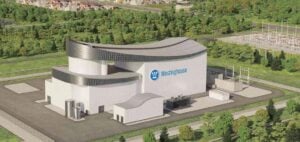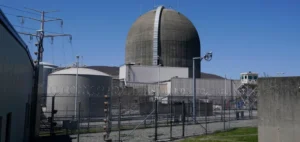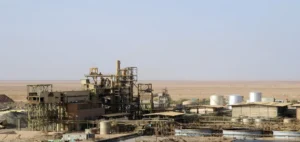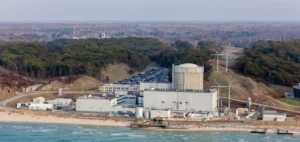A new company, Trondheimsleia Kjernekraft AS, has been established by the municipalities of Aure and Heim, the local energy company NEAS and Norsk Kjernekraft to develop a nuclear power plant project based on several small modular reactors (Small Modular Reactors – SMR). This project is part of a plan to strengthen regional electricity production while ensuring sustainable economic development.
The proposed site for the construction of the plant is located in the Taftøy industrial park, on the border between Aure and Heim, in Trøndelag county. According to the preliminary plan submitted by Norsk Kjernekraft to the Norwegian Ministry of Energy in November 2023, the total capacity could reach 1500 MWe if the entire project is realised.
A local partnership for a long-term project
The mayors of Aure and Heim, Marit Liabø Sandvik and Henning Torset, welcomed the creation of the company in a joint statement, noting that “nuclear power can meet the ever-increasing demand for electricity without compromising local jobs”. They stated that the project’s acceptance by the local population had been positive and that efforts would continue to maintain this momentum.
Jonny Hesthammer, Chief Executive Officer of Norsk Kjernekraft, said that “the dialogue with residents, businesses and political leaders has been very constructive”. He added that the participation of the municipalities in the plant’s ownership would ensure transparency and public ownership of the project, which could operate for nearly a century.
A project supported by the regional industry
Knut Hansen, Chief Executive Officer of NEAS, stressed that the Møre og Romsdal region, with its intensive industry, had a critical need for new power generation. According to him, the SMR plant would meet these needs for a long time and support regional industrial expansion.
The Norwegian government has tasked several agencies with developing an Environmental Impact Assessment programme for this project, with recommendations expected before September. Norsk Kjernekraft plans, if the administrative steps are successfully completed, to begin investigations later this year.
Outlook for nuclear power in Norway
If the Aure and Heim project succeeds, it would represent nearly 10% of current Norwegian electricity production and be equivalent to the country’s entire developed wind capacity. Norsk Kjernekraft aims to build, own and operate several SMR plants in Norway, in partnership with energy-intensive industries and strong financial investors.
In addition to Aure and Heim, Norsk Kjernekraft has identified Vardø, Øygarden and Halden as other potential sites for future nuclear installations. The committee mandated by the government to assess the future of nuclear power in Norway must submit its evaluation report by 1 April 2026.





















